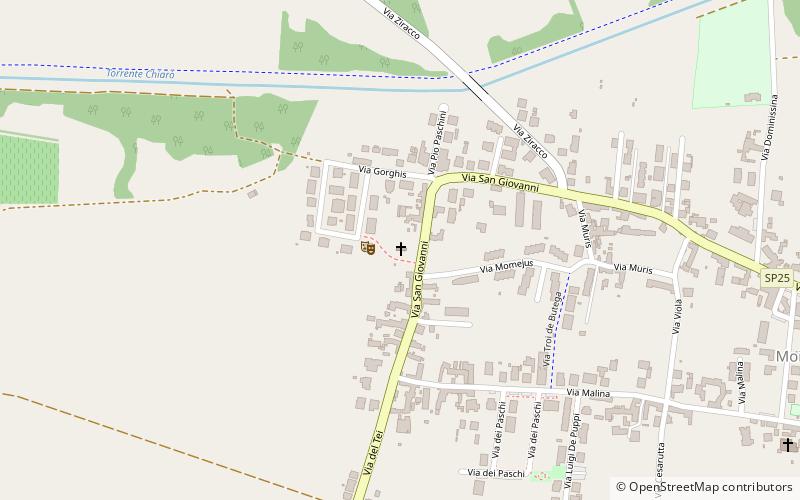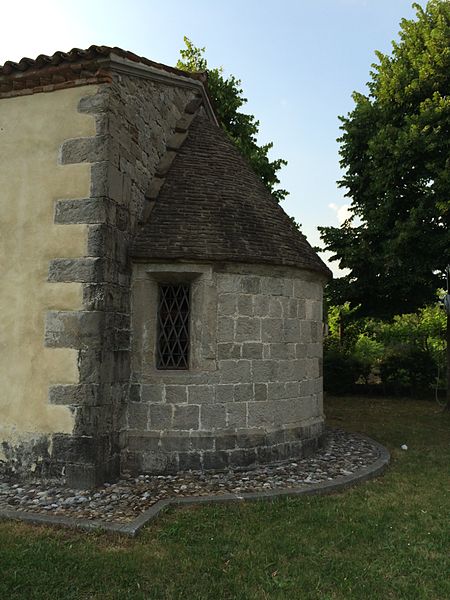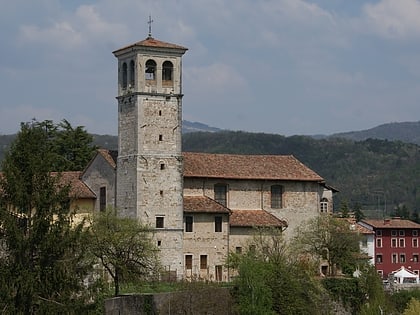Chiesetta di San Giovanni Battista, Moimacco


Facts and practical information
The Church of St. John the Baptist in Malina is a small religious building located in the center of Moimacco.
The origin of the building would date back to the period from the 8th to the 12th century, a period that is validly reflected in the wall structure of the present artifact, although the earliest formal records attest to the presence of the Church of St. John in Malina di Moimacco to the 14th century.
On the night of January 25, 1348, an earthquake struck Venice and Friuli, ruining the Basilica of Aquileia and destroying towers and palaces in Cividale, Gemona and Udine. The small church was also damaged, and this was the occasion to change its plan with the addition of the circular fortified apse with masonry - made from the stones of the Cividale towers - and the cone-shaped roof with slate slabs.
The Turkish invasion of 1477, the long war of the 1500s between the Austrian Empire and the Venetian Republic, and especially the disastrous earthquake of March 26, 1511 brought new changes to the structure of the little church with the opening of windows, a new roof covering, and the rebuilding of the single-lancet bell window. All these works were finalized with the 1572 reconsecration.
This post-seismic restoration also coincided with an artistic renovation, which had already begun in the 14th century with the creation of the frescoes in the apse and continued in the 15th century with the composition of the wooden altar of the Crowned Virgin Enthroned with Child and the statues of St. John the Baptist with phylactery and St. Gervasius with sword at his side. These works, now housed at the Archaeological Museum in Cividale del Friuli, were moved to the church of San Donato in Valle in Moimacco, while the church of San Giovanni was provided with another altarpiece with the wooden statue of St. John the Baptist in the center and the Virgin and the Announcer at the sides in painting, in the late 16th-century Renaissance style.
Further restoration work was carried out in the 17th-18th centuries. This is evidenced by a date engraved on the lintel of the main entrance in 1701.
In 1742 new work was authorized: a semicircular opening above the side door and other rectangular windows were made, the floor and roof were renewed, and the interior was defrocked. The restorations completed, the church was reconsecrated in the year 1764.
At the end of the 19th century, due to a cholera epidemic, the little church was used as a lazaret, while during World War I it was occupied by Italian troops who built dormitories there. During the Austro-Hungarian invasion in 1918, the church bells were requisitioned. At the end of the war the artifact was returned to the parish.
The earthquake that devastated Friuli in 1976 necessitated some work on the roof and exposed beams. In addition, the perimeter walls, interior and exterior walls were rebuilt and consolidated, and the flooring was regenerated.
At the end of the 20th century, further restoration work was undertaken to further renovate the roof of the building, to construct the cobblestone walkway for rainwater runoff, and most importantly to bring to light the 14th-century frescoes in the apse.
Via S. Giovanni, 34Moimacco 33040
Chiesetta di San Giovanni Battista – popular in the area (distance from the attraction)
Nearby attractions include: Palazzo Pretorio, National Archaeological Museum, Oratory of Santa Maria, Longobards in Italy.











